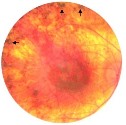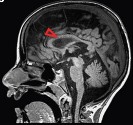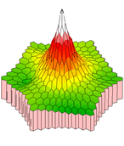Breadcrumb
- Home /
- Research /
- Programs /
- Child Health and Human Development /
- Themes

CHHD | Child Health and Human Development Program
CHHD
RESEARCH PROGRAMS
Themes
The Child Health and Human Development Program encompasses four general themes which will foster internal collaborations to result in strong translational and transdisciplinary child health-focused research:
 | Human Reproduction and Development Gametogenesis (Dr. Chan, Dr. Clarke, Dr. Nagano, Dr. Naoumova, Dr. O'Flaherty, Dr. Ryan, Dr. Taketo, Dr. Trasler, Dr. Zini) Embryo development and health (Dr. Dufort, Dr. Gupta, Dr. Jerome-Majewska, Dr. Naoumova, Dr. Ryan, Dr. Slim, Dr. Trasler) From bench to bedside, to populations and back (Dr. Basso, Dr. A. Gagnon, Dr. Kramer, Dr. Platt) |
The conceptual design of our program starts at the beginning of life, with the examination of biological and health-related events of the gamete prior to fertilization, through the early embryo, to the foetus and perinatal events. It is known that much of human health throughout life is determined during these crucial steps. Three subdivisions of this theme are covered by our program: Gametogenesis: There is an urgent need to better understand how the gametes are created, what can go wrong during this complex process, how it can be affected by adverse environment, and how we may ensure that clinical interventions produce healthy newborns Embryo development and health: Following fertilization, a key bottleneck occurs at implantation of the embryo into the uterus, where disruption of the maternal-fetal interface leads to pre-eclampsia or pregnancy loss. From bench to bedside, to populations and back: To transfer these findings to human subjects and populations in the perinatal period | |
 | Molecular and Cellular Determinants of Child Health Common themes in different health issues (Dr. Eppert, Dr. Jabado, Dr. Polychronakos, Dr. Rak, Dr. Rohlicek) Environment and epigenetics (Dr. C. Goodyer, Dr. Naoumova, Dr. Rozen) From common to rare diseases (Dr. Braverman, Dr. Bernard, Dr. Gupta, Dr. Jerome-Majewska, Dr. Mitchell, Dr. P. Goodyer, Dr. Rosenblatt, Dr. Ryan) |
Despite recent advances, a multitude of health issues (both biological and psychosocial) during the formative years of childhood remain unresolved, affecting health for the rest of the individual's life. Three subdivisions of this theme are covered by our program: Common themes in different health issues: Genetic basis of diabetes and autoimmunity, genetics and epigenetics of childhood brain tumors, and malignancy via exosomal and leukemic stem cell work Environment and epigenetics: Genes are not the exclusive determinants of health and the study of their interaction with environmental factors will be enabled, in the next five years, by enormous progress in epigenetics, the study of the molecular footprints of the environment. From common to rare diseases: Although rare individually, many diseases as a group contribute a significant health burden that must be addressed. These include various kidney and urogenital diseases, peroxisomal disorders, and rare metabolic disorders | |
| |||||||||||||


